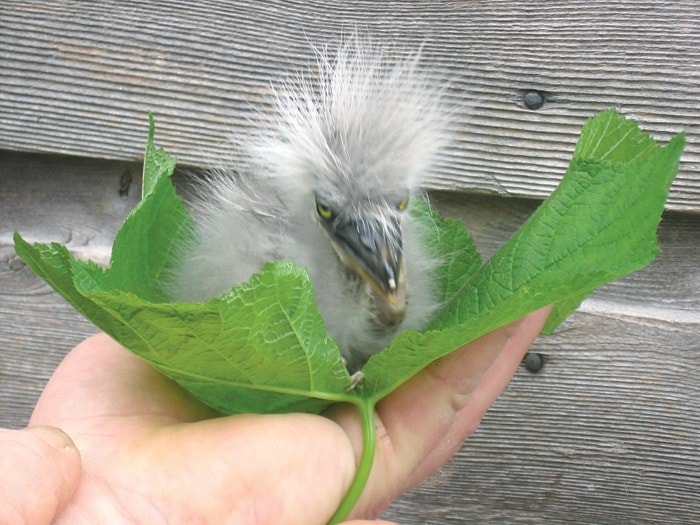The road to adulthood for baby wildlife is paved with many obstacles, even more incredible is how tiny some species arrive in the world and how fast they must develop in order to survive. Recently, I was overwhelmed with the bumper crop of wildlife babies being cared for this season, it also reinforced how many of these cases were taken in due to human actions. As always there were multiple fawns, some a few days old others a few weeks and although we have information on our web site and informative articles they are still being kidnapped by well meaning people who think they can raise them. Fawns and other baby wildlife need their parents either for antibodies that protect their immune system, or to teach them their life and survival skills.
MARS is still getting orphaned deer when mothers are killed by vehicles; please slow down when deer are near the road and expect fawns to follow an adult across the road. It is heartbreaking to see a fawn left by the side of the road with a broken leg. Fortunately, the fawn we received recently underwent surgery to pin and set its fractured leg and it is on the road to recovery.
MARS was fortunate to receive funding from The Olympia Charitable Foundation in Alberta to build a “Bambi Bungalow” in a secluded corral keeping the recovering deer away from any outside stresses.
We would really appreciate any donations towards the fawns’ milk fund.They are fed with specially formulated powdered milk that is costly to buy.
These fawns will be fitted with ear tags so that they can be tracked and identified to trace their territory.
My next encounter was with a prehistoric creature that was sitting on a salmonberry leaf held in the palm of a hand. A large beak flanked by two alert beady eyes appeared to be nestled in a powder puff. Hidden underneath were two gangly legs and big feet. On close inspection there was no mistaking the teeniest great blue heron chick I have ever seen.
This was a very fortunate little bird. It was observed as it was plucked from the nest in a heronry by a bald eagle. It must have been the heron’s lucky day as the chick was dropped from the bald eagles talons landing in a bush close to its rescuers.
The chick was still wet and it was brought to the center where it was put into an incubator. The challenge with a bird this small was how and what to feed it. We were able to get advice from another rehab center that had dealt with this situation and was able to offer help.
Bald eagles are one of the main threats to great blue herons and in Comox for most of the year they co-habit in the same area. However during the breeding season, the herons are not as successful as the eagles at defending their nests and young.
It always amazes me that these long-legged, ungainly birds perch and nest in the treetops and fashion a very loosely woven nest of sticks which is open to predation and the elements. Nests are often in areas of thick under growth and even if the herons survive falling out of the nest or being plucked from it, the parents cannot reach them on the ground and they starve to death.
Finally, the last interesting case was a bald eaglet, which was also an unfortunate victim, this time of its own sibling. Bald eagles usually have two chicks and they hatch several days apart. Survival of the fittest holds true for these babies as the eldest is stronger and will bully the younger sibling. This is natural behavior and if the younger chick cannot fend for itself and be aggressive in return it will often starve or in the case of this eaglet it was pushed out of the nest after being pecked repeatedly by its sibling.
This is another happy ending as the event was witnessed and the eaglet rescued. This week the eaglet was transferred to O.W.L. (another rehab center in Ladner) where it will be raised by a non-releasable foster bald eagle.
Please watch and wait before intervening with wildlife. Call our emergency line for advice 1-800-304-9968. All of the cases featured above did require speedy intervention and rescuing, but so often most do not.
Please check our web site for information on how you can help us secure funding from Shell Canada. Shell Fueling Change is an environmental initiative and your vote can earn us funding for Into the Blue, a great blue heron study of roosting maps and feeding habitats in the Baynes Sound/Comox Valley area which has never been recorded. For more information on how to sign up and to follow our progress go to www.wingtips.org and follow the links. With your vote we could raise $25,000, closing date Oct. 31.
